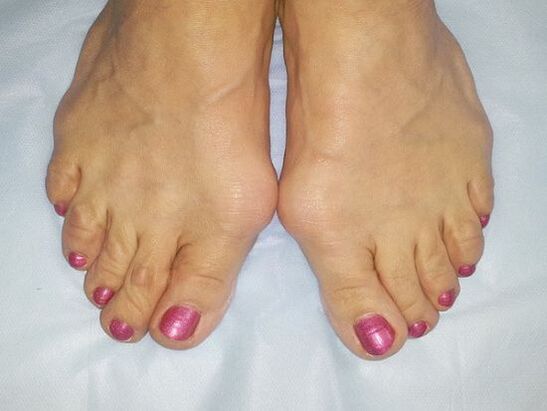
Hallux Valgus is so common that in medical practice there are more than four hundred options for surgical solutions for this problem.Of course, not all interventions had equal success and completely resolved the patient's problem, therefore, in modern practice, the most progressive intervention options remain in which patients have a high chance of healing.Today, the Hallux valgus operation is focused on being as invasive as possible to combine with a good therapeutic effect from the intervention.
Indications
Hallux valgus is not just a problem for adults;It can also appear in children.The formation of a lump in the thumb at the initial phase does not disturb patients until sharp pain appears when walking, problems with shoe choice, and periodic bone inflammation.At this stage, most patients try to relieve pain by using traditional methods.Different compresses and baths only extend the course of the disease and lead to the only accurate solution for deforming Hallux valgus - surgical intervention.
Indications for operation are:
- Increased pain in the thumb;
- chronic inflammation that cannot be stopped, persistent swelling;
- damage to the skin in the area of bending valgus (cracks, suppression, ulcers);
- Planet valgus foot with heavy curvature of large toe joint;
- inability to help patients with conservative methods;
- the emergence of a lame walk;
- Limiting motor activity in the foot.
Doctors insist on the treatment of exclusively surgical finger valgus, as most patients are treated at a stage of the disease when it is not possible to correct the pathology conservatively.At the same time, if left untreated, the bunions will eventually lead to a redistribution of load on the other fingers, making the second to fifth fingers suffer and become crooked.Only with time surgical interventions can such complications be avoided.
Preparation for intervention
During surgery for Hallux valgus, serious preparation is performed in orthopedics.The patient undergoes all the necessary tests.Keyelade is a blood test whose results are important to exclude signs of an inflammatory process in the body.
In some cases, the standard test list can be met by determining the level of hormones and cancer markers if doctors suspect the development of a malignant foot process.
A mandatory stage of orthopedic operations is X -ray diagnosis - during the study, images are taken into two projections to determine the nature of deformation and the severity of pathological disorders.
In difficult cases, doctors can use the magnetic resonance imaging or calculated tomography.Such a study yields more accurate results.Based on the results of the tests, doctors decide which method is best to perform the operation.
Classification of surgical interventions
All operations performed for valgus can be divided into two major groups - minimal invasive operations and reconstruction interventions.The first type of surgical intervention in the foot is characterized by low trauma.
Surgery is used to a limited extent - only at the initial stage of development of the disease, if the deformation is irrelevant and in the presence of a benign increase in cartilage tissue, which can be easily removed through surgery.In all other cases, minimum invasive surgeries do not solve patient problems.
The minimum invasive interventions are performed quickly and do not cause complications.Scars after this operation are minimal.The doctor does two to three punctures for the intervention, the length of which does not exceed 0.5 cm.After these surgeries, the skin heals very quickly, and the disability period is up to two weeks.
When you perform reconstruction intervention, the volume of soft tissue damage is more important.However, a major advantage of operations is that they help remove significant leg deformities and help with severe curvature.Cutting during reconstruction intervention reaches four centimeters and is located on the medial side of the foot.With this type of surgery, doctors completely restore the anatomical position of the thumb.
You can also consider the operations depending on the location on which they are performed.There are three sets of interference - in soft tissues, bone tissue and combined surgery.When you interfere with soft tissue, valgus deformity can only be eliminated if there is no deformation of the metatarsal head.During such an intervention, the doctor works exclusively with soft tissues - tendons, muscles, bursa.
With surgical intervention in bone tissue, it is possible to correct second and third degree deformities.The intervention involves the appearance of part of the bone or performing an osteotomy.In a combined operation, intervention occurs in both soft tissue and bone.But the possibilities of such surgery are wider - doctors can at the same time remove a bone growth and perform plastic ligament surgeries.
Operational techniques
Bunions can be eliminated using some surgical techniques, each of which has its advantages and is selected for certain indications.
McBride operation

During the surgical intervention according to McBride, a cut in the first intermetting space is made only at the head level.Using the clasps, the doctor pushes soft tissue away and makes a cut in the inter -metatarsal ligament, which is on the surface.After that, the surgeon acquires access to the muscle tendon that is responsible for the abduction of the first finger - is mobilized and sewn with a special sewing material - vicryl.
Next, the doctor works with sessamoid bones;It traverses the deep ligament, which is attached to the sessamoid bone, thus eliminating its subluxation.Then the metatarsophalangeal joint capsule is distributed along the outer surface, after which a cut is made on the inner surface of the foot, approximately 5-6 cm long, through which the nerve is insulated and pulled to the side.
The capsule dissection is done in the form of an English letter V, with its peak pointed toward the thumb.Homan grates are placed above the bone and below it, and the cartilage growth in the metatarsal bone head are removed.If this is not done, patients will suffer joint pain in the future.
In the future, the development of surgery can be done in two ways, depending on the need for osteotomy.With osteotomy, it is necessary to use a pin that will attach the tendon to the bone fragments.In the last stage, excess capsule tissue is removed, plastic surgery is performed with a certain tissue voltage, after which the surgeon sews the ends of the wound and treats its surface.
This technique was proposed more than eight decades ago, but to date the operation has not lost its importance.To prevent relaps after intervention, patients are recommended to wear special orthopedic shoes after surgery.
Series
Surgical technique using minimal invasive series technique was proposed in 1998 by surgeon Cesare Faldini.Now it is also actively used in the surgical practice of doctors in many countries.It is a low-traumatic procedure and is effective at the initial stage of the development of the disease and with moderate bending of the foot valgus, when the angle of deviation of the thumb does not exceed more than forty degrees.
Reference!The surgery is not performed due to severe arthrosis.Patients can also be denied to this type of intervention if the first node of metatarsophalangeal is unstable.
Foot surgery is performed under local anesthesia.The doctor makes a cut on the projection of the metatarsal bone head of the thumb, opens the joint capsule and performs an osteotomy with a separate file or chisel.During this procedure, it is possible to achieve further redistribution of the load on the distal part of the metatarsal bone.
During the surgical procedure, doctors use Kirschner wires to create the correct position of the thumb - they are inserted into the medial side of the surface in an oblique direction, after which the doctor manually moves the finger and places it in the desired position.Operation during the rehabilitation process requires wearing a plaster caste - it is applied for at least two weeks.The needle is removed after about 1-1.5 months.
Chevron method
The Chevron technique is used for small deformities if the angle is less than 17 degrees.The main state for such an intervention is the lack of arthrosis and other serious changes caused by the foot valg.
Surgical treatment is performed as follows: At the initial stage, the doctor trims the skin just over the joint of the metatarsophalangeal leg.Shortened connections and the joint capsules themselves are highlighted.Typically, degenerative changes in tissues and ligaments provoke deformation of the thumb.Callus in fusion is removed using a chisel or saw.
A cut is made in the metatarsal bone at the head level, it is moved externally and placed under the sessamoid bone.Phalanx is then provided using screws or wires and the capsule is closed.Titan screws do not require post -operation removal, but the wires are removed three months after surgery unless it needs to do so earlier.
Scarf

In most patients, the bunion can be removed using a scarf osteotomy.This operation is performed for moderate deformation of the first finger valgus.Today, surgery is the most universal method of treatment of valgus;There are many advantages over other methods.
The positive aspects of the operation are as follows:
- During the procedure, it is possible not only to move but also to rotate the head of the metatarsal bone, which allows someone to achieve a more progressive result than with other surgical interventions;
- If the size is insufficient, the doctor may perform a bone extension procedure;
- With varus deformation, the bone can be moved to the medial side;
- To reduce the load on the inside of the foot and the area of the first finger, you can move the bone slightly down and to the side;
- If necessary, you can trim the bone length;
- When the joint is pronounced, the bone elements can rotate.
Surgery is performed under spinal anesthesia.The surgeon makes a cut on the inside of the foot from the beginning of the toe to the beginning of the metatarsal bone.After that, a zigzag cut is made on the side of the bone of the first finger, after which the bone head is moved to the desired position, its angle changes.At the same time, the doctor also changes the location of the tendons that are attached to the thumb.
Then the deformed articular capsule is divided externally and the bones are fixed to the required position using titanium screws.Usually the fixations are not removed;If they do not cause any discomfort, then patients continue to wear screws.Post -surgery rehabilitation takes three to six weeks.Immediately after the intervention, patients are recommended to wear a special orthosis or crack, in which it is necessary to load the foot as soon as possible.Splint is worn throughout the recovery period.
Laser
Removing Hallux valgus with a laser is also possible, but patients should not impose high hopes for this method of surgery.Although it is minimally invasive and softer, it is used exclusively in the early stage of development of the pathological process.
The undoubted advantage of surgical intervention is the small cut that doctors make close to the largest bone extension point.After healing, such an injury is virtually invisible, which allows for maximum restoration of foot aesthetics.Using a laser, doctors are able to perform limited interventions:
- Performing exostectomy - using a laser, part of the cartilage growth that is formed in the early stage of the valgus is removed;
- Make an osteotomy with a large cut - during surgery, removed the proximal phalaranx of the first finger;
- Perform the arthroplasty of the resection - the articular surfaces of the metatarsal bone and part of the phalanx of the thumb are removed.
Laser removal is usually performed in clinics where there are special equipment.After surgery recovery is minimal - patients can go normally after just a few weeks.
The only drawback of laser intervention is that the incorrect bone position cannot be corrected, but it is only ground for the required parameters.In this case, patients are at risk of relapse.
Arthritis
Surgery to remove valgus using arthrodesis is rarely used today, but sometimes it is the only way for patients to get rid of large toe valgus.Surgery is one of the most radical methods of intervention.
With the help of such surgery, it is possible to remove the phalanx base of the first fingers and adjust your fingers along with special screws.
Important! During surgery, the main goal has been achieved - eliminating deformation and shared the proper position, however, not all patients become comfortable after such surgery.
There are serious contraindications for intervention:
- vascular atherosclerosis and other circulatory disorders;
- diabetic foot;
- Polneuropathy.
With arthritis and arthritis, patients can also be denied surgery if the joints are deformed, destroyed or constantly inflamed.In this case, patients will be advised to undergo minimally invasive surgery.
Among the complications of surgical intervention, the following pathologies may occur: severe pain, discomfort due to titanium fixing structures installed on the bone, and lame.Rehabilitation after intervention lasts eight weeks.It is necessary to walk in a caste only in the first days after surgery - this is necessary to adjust the elements.You can use baruch boot.These are specially designed orthopedic shoes that will relieve stress from the operated foot.
Review
If a patient is undergoing surgery to eliminate valgus, he can read reviews and find out what types of interventions are performed and how effective they are.Here are some similar thoughts:
"Last year I had to finish my career as a ballerina due to a deformation of Hallux valgus. We did it using the scarf method, everything seemed to go well, but the foot still hurts when it is exercised on its own."
"I have suffered from Hallux Valgus for a long time, but I did not dare to undergo surgery. I had a complex arthrodesis, the recovery lasted more than two and a half months, but after surgery it became much easier. Now I could walk without cane and do not have pain."
"The bone on my leg is hereditary - my mother and grandmother also suffered from the ground. I decided to do the first signs. The operation was performed using a laser, all excessive growths were removed from me, now my foot looks normal, but doctors told me to monitor for possible relapses."
Hallux valgus surgery in most cases allow a person to solve the problem of a bunion on the finger.When the first signs of valgus appear, you should not delay the treatment - the best results appear at an early stage of the development of the disease.























